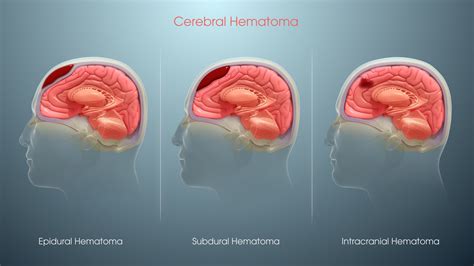Intro
Discover what is hematoma, a collection of blood outside vessels, caused by trauma, injury, or surgery, leading to bruising, swelling, and pain, and learn about types, symptoms, and treatment options for this bleeding disorder condition.
A hematoma is a collection of blood outside of blood vessels, often caused by injury or trauma. It can occur in various parts of the body, including the skin, muscles, and organs. Hematomas can be painful and may cause swelling, bruising, and discoloration of the affected area. In some cases, hematomas can lead to more serious complications, such as infection, nerve damage, or even organ failure.
The importance of understanding hematomas lies in their potential to cause significant harm if left untreated or misdiagnosed. A hematoma can be a sign of an underlying condition, such as a bleeding disorder or a vascular disease. Moreover, hematomas can be a source of chronic pain, limited mobility, and decreased quality of life. Therefore, it is essential to recognize the signs and symptoms of a hematoma and seek medical attention if necessary.
Hematomas can occur in anyone, regardless of age or health status. However, certain individuals are more prone to developing hematomas, such as those with bleeding disorders, taking anticoagulant medications, or engaging in high-risk activities. Additionally, hematomas can be a complication of surgical procedures, making it crucial for healthcare professionals to monitor patients closely after operations.
Types of Hematoma

There are several types of hematomas, each with distinct characteristics and causes. The most common types include:
- Subcutaneous hematoma: occurs under the skin, often caused by minor trauma or injury
- Intramuscular hematoma: occurs within the muscles, often caused by more severe trauma or injury
- Epidural hematoma: occurs between the skull and the brain, often caused by head trauma
- Subdural hematoma: occurs between the brain and the skull, often caused by head trauma
- Intracerebral hematoma: occurs within the brain tissue, often caused by stroke, trauma, or bleeding disorders
Causes and Risk Factors
The causes of hematomas can be diverse, ranging from minor injuries to severe trauma. Some common causes include: * Trauma or injury: falls, accidents, or sports injuries * Surgery: complications during or after surgical procedures * Bleeding disorders: conditions such as hemophilia or von Willebrand disease * Anticoagulant medications: medications that prevent blood clotting, such as warfarin or aspirin * Vascular diseases: conditions such as atherosclerosis or aneurysmsSymptoms and Diagnosis

The symptoms of a hematoma can vary depending on the location, size, and severity of the hematoma. Common symptoms include:
- Pain or tenderness in the affected area
- Swelling or bruising
- Discoloration or redness
- Limited mobility or range of motion
- Numbness or tingling
- Weakness or fatigue
Diagnosing a hematoma typically involves a combination of physical examination, medical history, and imaging tests. Healthcare professionals may use:
- X-rays or CT scans to visualize the affected area
- MRI or ultrasound to evaluate the size and location of the hematoma
- Blood tests to check for bleeding disorders or clotting abnormalities
Treatment and Management
The treatment of a hematoma depends on the severity and location of the hematoma. Mild hematomas may resolve on their own with rest, ice, and compression. More severe hematomas may require: * Surgical drainage or evacuation * Medications to control pain, inflammation, or bleeding * Physical therapy to improve mobility and strength * Monitoring and follow-up care to prevent complicationsComplications and Prevention

Hematomas can lead to several complications, including:
- Infection: bacterial or fungal infections can develop in the hematoma
- Nerve damage: compression or injury to surrounding nerves
- Organ failure: severe hematomas can cause damage to vital organs
- Chronic pain: persistent pain or discomfort in the affected area
Preventing hematomas involves taking measures to reduce the risk of injury or trauma. This can include:
- Wearing protective gear during sports or activities
- Using caution when taking anticoagulant medications
- Managing bleeding disorders or vascular diseases
- Avoiding high-risk behaviors or activities
Current Research and Developments
Research on hematomas is ongoing, with a focus on improving diagnosis, treatment, and prevention. Some current developments include: * Advanced imaging techniques, such as 3D ultrasound or CT scans * Minimally invasive surgical procedures, such as endoscopy or laparoscopy * New medications or therapies, such as clotting factors or anti-inflammatory agents * Studies on the genetic and molecular mechanisms underlying hematomasConclusion and Future Directions

In conclusion, hematomas are a complex and multifaceted condition that requires prompt attention and treatment. By understanding the causes, symptoms, and treatment options, individuals can take steps to prevent and manage hematomas. Future research and developments will continue to improve our understanding and management of hematomas, ultimately leading to better outcomes and quality of life for those affected.
We invite you to share your thoughts and experiences with hematomas in the comments below. If you have any questions or concerns, please do not hesitate to reach out. Additionally, we encourage you to share this article with others who may be interested in learning more about hematomas.
What is the main cause of hematomas?
+Hematomas are often caused by injury or trauma, which can lead to bleeding outside of blood vessels.
How are hematomas diagnosed?
+Hematomas are typically diagnosed through a combination of physical examination, medical history, and imaging tests, such as X-rays or CT scans.
Can hematomas be prevented?
+Yes, hematomas can be prevented by taking measures to reduce the risk of injury or trauma, such as wearing protective gear during sports or activities, and managing bleeding disorders or vascular diseases.
